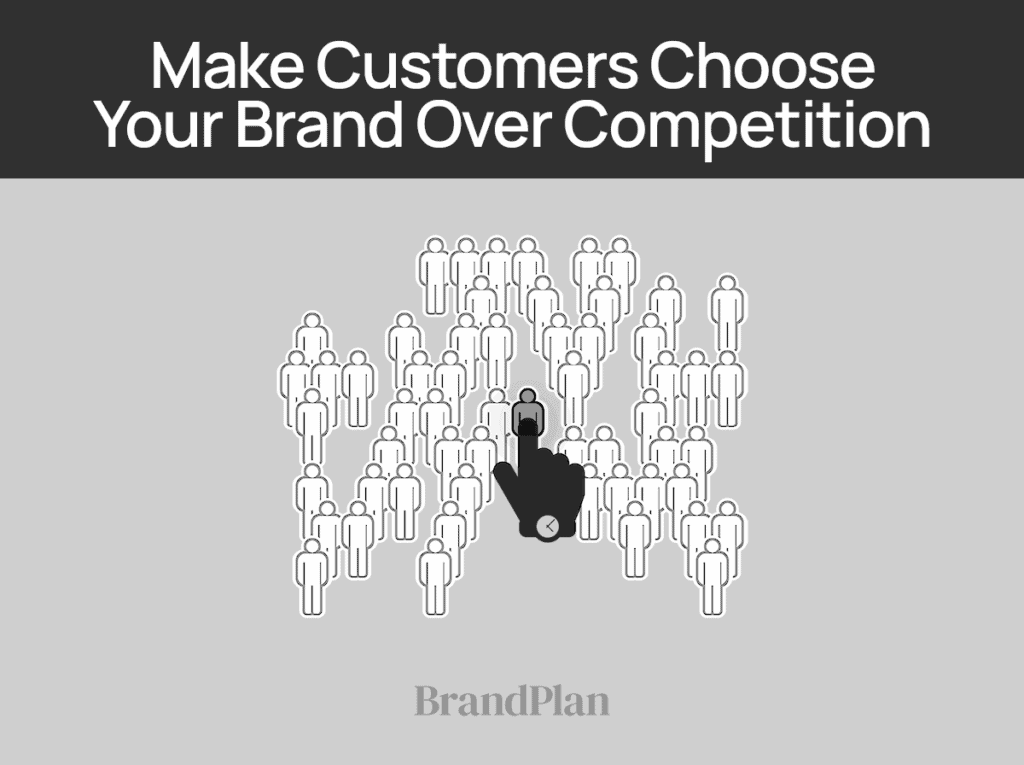
Differentiation Examples
Disruptive Brand — A brand that completely shocks and changes the industry because of its progressive way of doing things.
Examples: Tesla, Uber & AirBnB
Conscious Brand — A brand that truly wants to make a positive impact on the world and highlights their mission in their branding
Examples:Toms, 10Tree & Salvation Army
Service Brand — A brand that focuses on providing a service with a lot of attention-to-detail. Service brands highlight their high degree of customer care in their messaging.
Examples: UPS, Trader Joes, Sephora
Innovative Brand — A brand that brings exciting new products or services into the market. These brands lean on their ingenuity and position themselves as a pioneer or revolutionary in their market.
Examples: Dyson, Apple, The Boring Company
Value Brand — A brand that offers a product or service at a low price and are perceived to be of low to moderate quality. Often this type of brand is a commodity and they lean too much on the price & features.
Examples: Old Navy, NoName, President’s Choice
Performance Brand — A brand that differentiates by being the best and highest quality on the market. These brands embrace being the best and aren’t afraid to show it.
Examples: BMW, Gillette
Luxury Brand — A brand that differentiates by being the most lavish, decadent and expensive product or service. Luxury brands make customers feel successful and affluent.
Examples: Rolls Royce, Rolex, Louis Vuitton
Style Brand — A brand that differentiates itself based upon its signature aesthetic and attitude.
Examples: Adidas, Burberry, Vitaly Design
Experience Brand — A brand that differentiates based upon the immersive and amazing experience it provides customers.
Examples: Disney, A Happy Place, Build-A-Bear
VIP Brand – A brand that positions itself as exclusive or only available to a select group. VIP brands make customers feel like it’s a privilege to have their product or service and are not available to just anyone.
Examples: Supreme, Yeezy, Berkshire Hathaway
Differentiation
Your differentiation strategy answers these two questions:
- In what market are we going to compete?
- How are we going to compete differently than the other players?

30 Differentiation Strategies
Price Differently
Human beings subconsciously categorize or differentiate a product based upon its price tag. An Old Navy shirt may be differentiated as an essential or basic item based upon its $12 price tag. The same shirt could be sold at Banana republic for $120 and would be differentiated as a premium product.
Specialize
A doctor who is a General Practitioner might make ¼ the income a brain or heart specialist would. Specialists focus on one particular problem or part of the industry and are automatically perceived as superior in what they focus on. An example in the business world is a nutritionist who is an expert on healing the gut or a real-estate agent who specializes in selling commercial real-estate.
Find your Niche
When you find a particular group of people to focus on serving, you immediately stand out from other businesses. You make the people in your specific niche feel like you were made just for them and that you are especially qualified to serve them. AN example of this is a Yoga Instructor who focuses on the niche of teaching yoga to pregnant women or a financial coach who focuses on serving young entrepreneurs.
Be the underdog
You can differentiate by introducing you, your brand, or your customer as an underdog in your market. People are captivated by underdog stories and are much more likely to ‘root’ for someone who is fighting against all odds. One part of why Elon Musk is such a famous personality is because of the turmoil and struggle he had to face when launching an electric car. Tesla was the underdog at the time in comparison to its rivals in the traditional automobile industry. Can you differentiate your brand as an underdog, who is going to succeed against all odds?
Create a VIP Experience
Everyone wants to feel important, while also feeling a sense of belonging and superiority. This is exactly why people love joining fraternities or sororities in college and also why the most sought after nightlife spots are the ones which are the hardest to get into. Creating a brand experience which only certain people are qualified to enter is an extremely powerful way to differentiate your brand and charge a premium for your product or service.
Own Your Brand Personality
A compelling brand personality immediately differentiates it from boring and corporate brands that lack a unique personality.
Take on a Competitor or Enemy
Uniting against a common enemy is a powerful way to come together with your customers. Dollar Shave Club took on the competition, and much of their branding focused on standing up to the ‘overpriced’ companies like Gillette and the industry practices in general. Uniting your audience against industry standards makes you differentiate as a Rebel, disrupter or game-changer.
Heritage and Origin
Brands can differentiate based upon their origins and patriotism towards their heritage. Beer brands do this all of the time a la Molson Canadian, Peroni (Italy), Sapporo (Japan), Red Stripe (Jamaica), Stella Artois (Belgium) and many more. When we buy these beers we are interpreting its taste, quality and brand experience through the lens of its country of origin. Many fashion brands lean into their Italian or French heritage to align with the qualities of style from that region.
Personal Brand
You can differentiate your brand by tying your name into the brand and becoming the mascot or face of your product or service. This is a very effective strategy for coaches, solopreneurs, real-estate agents or any other industry where personal interaction is a must. Being a personal brand differentiates yourself from faceless brands and makes your audience feel like they know you even though they may have never met you. When done right personal brands can breed a sense of trust, admiration, loyalty and even friendship.
Use a Mascot
Big brands who do not want a personal brand can use a mascot to help humanize or add personality to their brand. Geico has used Martin the Gecko to add wittiness and humour into their brand personality. Other popular examples are Tony the Tiger, the Kool-Aid Man and the Green Giant. If you don’t want to use an animated mascot, you can even have a person be the mascot of your brand. Jared the Subway Guy, an everyman who used Subway sandwiches to lose 200 lbs and CEO of President’s Choice Galen Weston, are great examples.
Use Time to Your Advantage
Often we want products or services quickly but sometimes patience is a virtue. We want our fast food to be prepared quickly, but if we go to a gourmet 5 star restaurant, we would raise an eyebrow if the waiter brought out the food 2 minutes after ordering. Rolls Royce cars take 6 months to make and Rollex proudly advertises that each watch takes a whole year to craft. Understanding the timeline your product or service takes to deliver is an important differentiator, and understanding how to communicate your process & timing is a powerful differentiation tool.
Brand on Purpose
A shared purpose unites your dream clients and employees. 10 Tree has united with their dream customers and employees through the shared purpose of planting 10 trees for every purchase to create a sustainable change in our environment. Together, we have planted over 75 million trees to date and is a great example just how powerful a shared purpose can be and how meaningful brands are changing the world.
Name Change
First impressions are highly important and your brands name and tagline will be the first thing your customer sees or hears. Certain brand names can communicate the pitch of the product in the name, take Dollar Shave Club, Netflix or BrandPlan. Other brand names are bold and likewise attract attention, for example Fat Bastard Burrito or What The Fork, immediately attract attention.
Redefine How People Buy.
Changing times mean changing business models and payment structures. Dollar Shave club revolutionized the way people pay for razors, opting for a subscription service model linked to direct deposit. Can you redefine the way your dream clients purchase your product in your industry?
Have a Signature Look
Style brands have an iconic look which makes them immediately stand out or demonstrate who they are linked to. Apple is known for its clean, simple, modern yet futuristic look, often sporting a cool grey, white and black colour pallete. Having a strategic visual strategy which utilizes the psychology of color is essential for differentiating your brand from other options
Over Deliver on Expectations Consistently
There is something to be said for exceeding your dream clients expectations! Customers are so used to being disappointed by a brand. Don’t be stingy, blow your customers expectations away, especially if you are a coach or service provider. You can exceed your customers expectations with your energy, enthusiasm, attention to detail, customer care or by giving them add-ons to their products which they did not expect.
Be Bold
Sometimes the best way to stand out is by being bold, expressing who you truly are unapologetically. Now it’s important not to be bold just for the sake of it, customers can smell inauthenticity from a mile away. Rather, discover the truth already inside of you and present it in the most confident way possible.
Engage The Senses.
Great brands engage as many of the senses in the branding experience as possible. Most brands understand the importance of sight, as displayed with our industry’s obsession over logos; but have you considered how to incorporate hearing, smell, touch and taste? Many content creators use audio branding in their video content; such as Netflix, Amazon Prime, and even YouTubers such as Coach Greg Doucette. Luxury hotels such as the Ritz Carlton use a signature scent strategy to attract customers. The more senses you can engage, the deeper experience you can give your customer.
Convenience
People always want things as quick and hassle free as possible. If everything else is the same, people will ALWAYS choose the more convenient option. Brands such as Amazon thrive on convenience, giving you the best price, the fastest shipping and the easiest purchase experience.
Link to an occasion
Did you know that Coca-Cola popularized Santa Claus? Hershey’s Kisses are invariably associated with valentine’s day, Guinness with Saint Patrick’s Day, and Cadbury Mini Eggs with Easter. Associating your brand with a holiday is a powerful way to differentiate your brand. On that holiday, people will be celebrating your brand just as much as the occasion which your brand is linked to, and all of the nostalgic, happy memories from the holiday will be placed on your brand in the consumers mind.
Exclusive Drops or Limited Time Only
Brands like Supreme and Yeezy have gained a cult-like following because of how exclusive their product drops are. People wait in line overnight and pay a premium for the chance to be one of the few lucky people to have access to these limited products.
Reinvent A Category
Roundnet was a dying sport that no one really ever heard of or played; until the brand was reinvented as Spikeball by a brand of the same name. Now Spikeball is the fastest growing outdoor sports activity, and does tens of millions in sales every year. Is there a category, industry practice, which you could revitalize, own and differentiate your brand with?
Innovation
Many tech brands lean into innovation, and differentiate by offering the best, newest technology. However, differentiating on the basis of being a pioneer in your industry is not reserved just for tech companies. If you are a coach you can communicate how your coaching is innovative and new in your industry. Maybe you’re a nutritionist who is leaning into a new diet protocol which completely changes the game and helps people reach their fitness goals faster.
One-of-a-Kind Experience
My kids have never forgotten the trip they took to build-a-bear, making their stuffed toy in the store, was a great experience for them. Creating a unique experience which makes your dream clients feel special inside is a fantastic way to differentiate your brand.
Stand out on shelves
Really strong brand packaging can be an obvious and effective differentiator. Axe products for example are dark, sleek and do not look like the typical cleanliness or grooming products. If you are selling an online product, consider how to make your online advertising, website or social media stand out.
Create A Brand Ritual. Associating a brand with a set behavior can have a powerful effect on loyalty and enjoyment. Consider some classic examples of rituals that we all recognize: Separating your Oreo and dunking it in milk; Breaking a KitKat into halves and eating it on a break; Popping the cap of the Pringles tube; and The Stella Artois’ 9-step pouring ritual. Rituals provide a way of interacting with the brand that is fun, known and widely practiced. That in turn gives them greater value.
Be a Rebel
Stand up against conventional wisdom with your opposing viewpoint. This differentiation strategy is especially potent for brands with the Outlaw personality. Explain why you are different or better than industry standards and don’t be afraid to ruffle a few feathers.
Same But Different
Put a different spin on a classic product and you are bound to turn some heads. Take Delighted By Desserts, a hummus brand that makes dessert style versions of the classic product; such as Red Velvet Cake flavoured hummus.
Tell Your Unique Brand Story
Your brand story is essential to differentiate yourself from your competition. The world’s best personal brands in the world all share their brand stories that help differentiate them from everyone else while making them unique.
Serve an unmet need
Look at your dream clients and use your superpower of understanding to determine an unmet need they have which you can serve. Enterprise Rent-A-Car became the top car rental company in the U.S. when they began to offer a leasing option – when none of their competitors did.
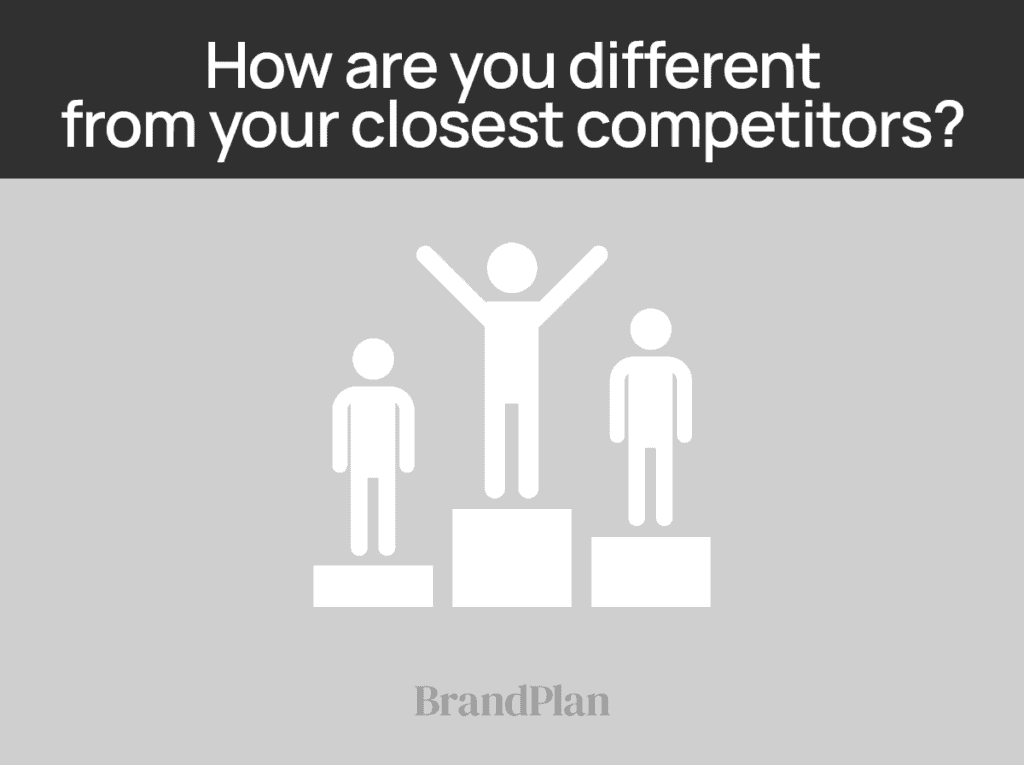
Differentiator Keywords
Specific words help differentiate your business from others. Differentiating your business, products and services are essential for building a brand in the mind.
Differentiator Keywords
Without (negative point of difference)
Not (point of difference)
With (positive point of difference)
Free (Negative Point of difference – free)
Look for these differentiating keywords in the examples below.
Examples
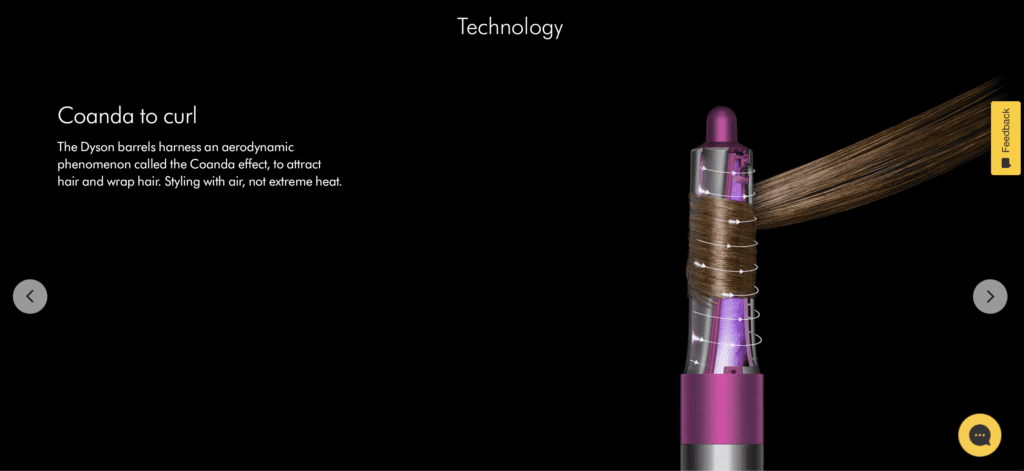
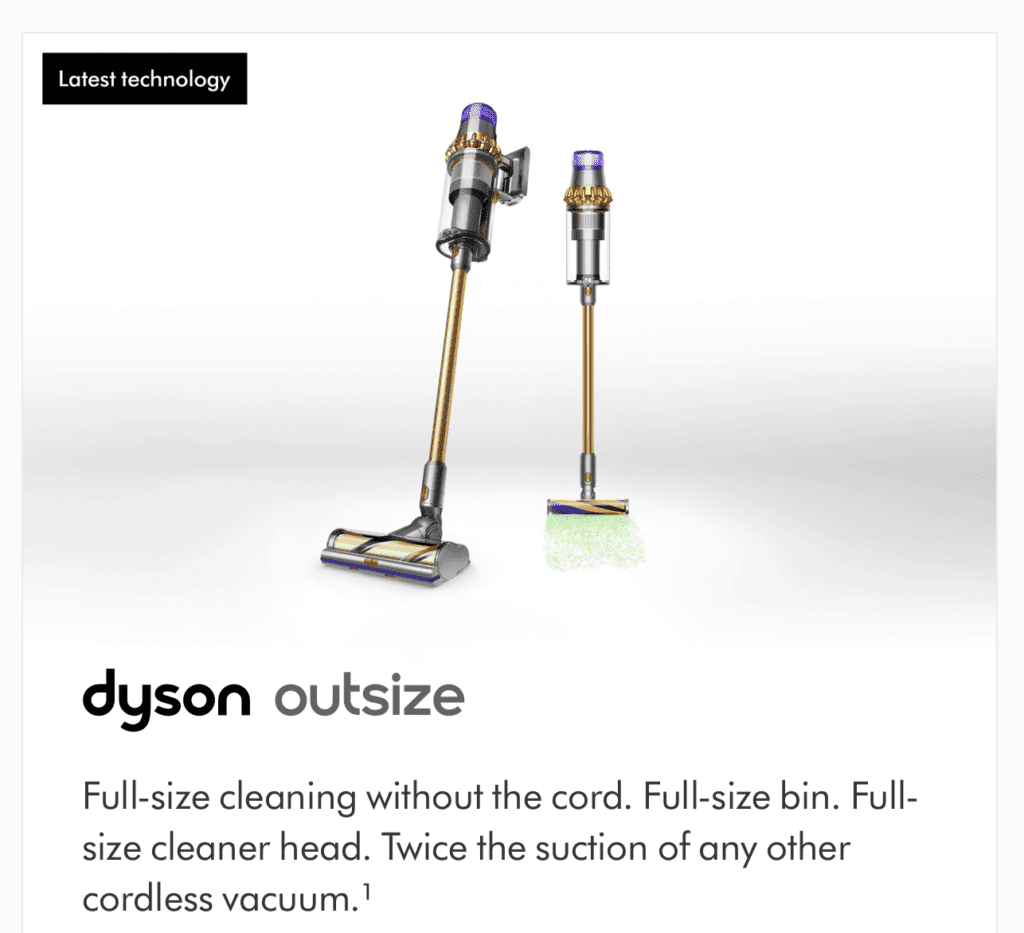
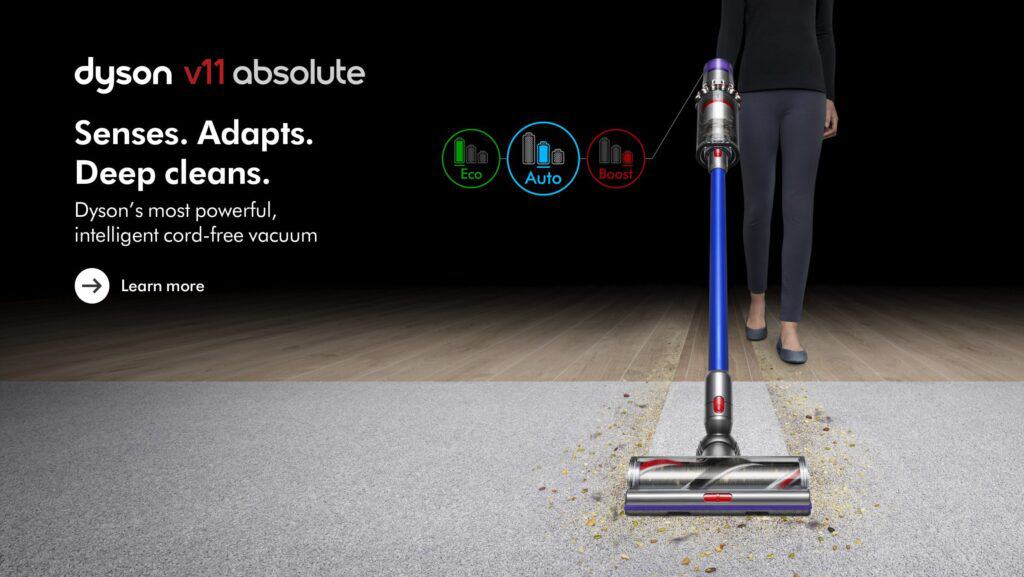


Create Your Brand Differentiation Statement
Differentiator Statement
We provide [end Result] with [difference from competitors/benefit of difference]
OR
We provide [End Result] without [difference from competitors /benefit of difference]
OR
End Result is [difference from competitors /benefit of difference] not [What competitors provide/point of difference]
Differentiator Keywords
Without (negative point of difference)
Not (point of difference)
With (positive point of difference)
Free (Negative Point of difference – free)
Create your brand differentiation statement in your BrandPlan.


